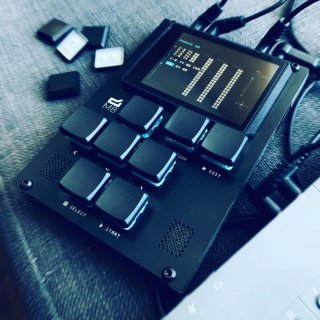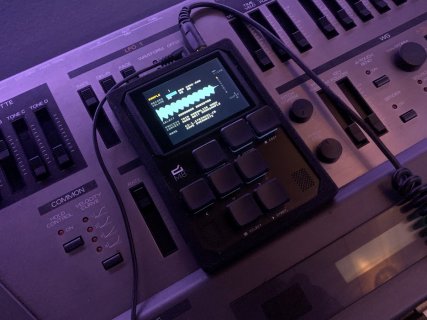Powered by the Teensy 4.0 the M8 is a portable handheld tracker style sequencer featuring 8 stereo tracks with full MIDI support. Instruments can be configured to play samples (8/16/24bit mono or stereo wav playback with loop modes), 4op 12 algorithm FM synthesis, mutable instrument braids engine, 8 bit wavetable based synthesis, and MIDI output. All synthesis engines also have a multimode filter, gain staging effects, 2 envelopes and LFO. There is also a global Reverb, chorus, and delay, as well as a main output limiter, audio input routing and monitoring (USB and analog), sampling, sample editing, and song rendering/resampling. Along side USB MIDI and Audio, the display code uses a SLIP serial protocol for a remote/virtual display on desktop.


This project has been almost 2 years of development and over the time spent on it has transitioned from side project to product. Originally I was working on an old sequencer I made using the Teensy 3 back in 2013, dusted it off with a Teensy 4.0 and everything got out of hand very quickly. The effects algorithms and all synthesis engines with the exception of Braids are all custom, the Audio library is utilized for the audio stream, but on the wonderful float variant. This project is currently not open-source but that is plan long-term. A possibly interesting project development history can be found on my Instagram as a story highlight at the top. As well user posts/videos can be found on Twitter etc with the tag #m8tracker
https://dirtywave.com/

